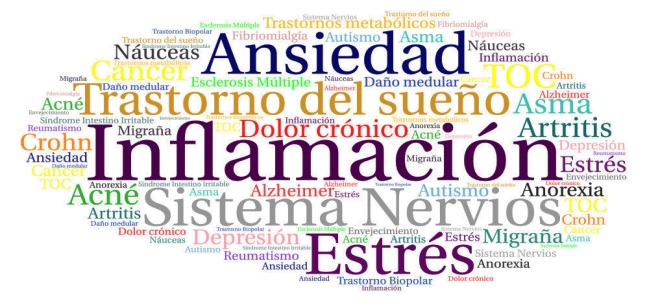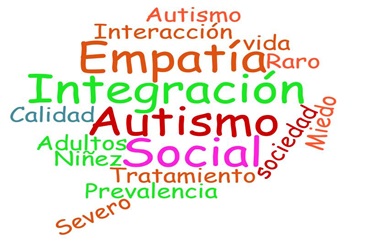Cannabis and OCD

Cannabis and OCD. How can cannabis contribute to alleviate obsessive-compulsive disorder (OCD)?
It is currently considered that around 3% of the population suffers from an obsessive-compulsive disorder (OCD), which manifests equally among men and women. Although it is a condition mostly associated with adulthood, it has also been detected in children. Several studies show that between 40 to 60% of OCD patients do not respond to the first line of conventional medical treatment.
A recent study evaluated the administration of Dronabinol (artificial or synthetic cannabis that mimics THC) in patients with conventional treatment failure. Based on data from previous clinical trials as well as their own data, and having into account the antiobsessive effect of cannabinoids, the researchers hypothesized that cannabinoids could help reduce the symptoms of OCD. It is well known that OCD is associated with hyperactivity, which in turn is related to alterations in the serotonergic, dopaminergic and glutamatergic neurotransmitter systems. It has also been reported that cannabinoids inhibit the release of glutamate in the Nervous Central System. The CB1 cannabinoid receptors are highly expressed in the striate nucleus, a region of the forebrain related to OCD as well as to other diseases, such as Huntington’s disease and Parkinson’s disease. In this particular region of the brain glutamate has a pivotal role as a neurotransmitter. The antiobsessive effect of Dronabinol could be due to the modulation of glutamate release, among other causes.
Some other studies on Cannabis and OCD have evaluated the effect of cannabidiol or CDB, that is, non-psychoactive cannabis. It has been shown that even at small doses, CDB contributes to treat the symptoms of OCD and, hence, to reduce anxious thoughts. There is evidence in the literature showing that CBD might be effective for the treatment of stress and anxiety behaviors. Therefore, since this disorder is mainly an anxiety-related disorder, it is not surprising that an anti-compulsive behavior was observed when used to treat OCD patients. The same study also highlighted the predominant role of CB1 receptors in said effect; their activation mitigated the symptoms of anxiety. These effects might be attributed to the fact that our endocannabinoid system is what our organism synthesizes to make us feel better and relieved. The problem arises when we found ourselves in an anxious state, since our own cannabinoids are no longer produced. Hence, if cannabinoids are provided externally, the whole system can be activated resulting in neurological and physical relaxation.
In order to prove that the endocannabinoid system and its receptors play an important role, a group of researchers on Cannabis and OCD removed all the CB1 receptors in an animal model and observed that there was an alteration of routine behaviors, showing that cannabinoids are indeed involved in behavior and decision making.
The other type of receptor, CB2, was also highlighted in the study as well as in previous data as the receptor involved in anxiety and depression disorders. Therefore, it was decided to use an agonist (a compound having the same function as the original substance that activates the receptor) in a mouse model to study its function. It was shown that all parameters investigated improved upon the administration of the agonist substance, including a reduction in compulsivity. It was therefore suggested that CB2 receptors might constitute a suitable target for the therapeutic treatment of disorders related to anxiety and depression, and that compounds able to activate such receptors might improve mood.
Another study in rodents showed that the administration of cannabinoids inhibited the obsessive-compulsive behavior in mice. In addition, it was also shown that the intraperitoneal (abdominal cavity) administration of CBD was much more effective than its oral administration, proving that cannabinoids were able to easily cross the blood-brain barrier (a barrier in the central nervous system that prevents the entry of substances from the blood into the brain).
Overall these results are very promising and suggest that cannabinoids constitute a good treatment for this particular disorder. Nevertheless, additional studies in humans as well as testing different doses of CBD and THC are still needed to determine the extent of their effectiveness of Cannabis and OCD treatment.
What is OCD? How is it caused and what are its symptoms?
The obsessive-compulsive disorder (OCD) is an anxiety-related disorder (in order to know more about anxiety and cannabis please refer to the corresponding chapter about anxiety). It usually presents with a variety of symptoms that have in common a desperate and repetitive need to have everything in perfect order, or symmetric, or numbered, or spotless, etc.. which creates a sort of ritual. These repetitive thoughts cause considerable stress and anxiety, which does not disappear until the obsessive action is performed. The relief obtained from performing such action does not last long and anxiety returns after a short while, which triggers another obsessive thought that will require the completion of yet another ritual. OCD patients can develop a wide variety of obsessive thoughts and needs, such as the need to constantly re-check things (for instance, not being sure whether the gas stove was properly turned off upon leaving home), hypochondria (excessively worried about being ill), and metaphysical thoughts (being doubtful about one own existence) among others.

OCD patients also present visual satisfaction, that is, the view of well-organized elements is pleasant to them. If such elements were to be unorganized, anxiety would develop and they would feel the need to organize them. This characteristic and the use of symmetry and shape-related patterns are often used to diagnose OCD.
In order to obtain an accurate diagnostic, however, multiple tests are needed, which include:
Physical exploration. It is used to rule out other pathologies.
Laboratory analyses. These may include, for instance, the analysis of thyroid activity or the abuse of alcohol and drugs.
Psychological evaluation.
Diagnostic criteria for OCD. The physician can apply the criteria established in the Diagnostic and Statistical Manual of Mental Disorders (DSM-5) published by the American Psychiatric Association.
OCD is a very annoying disorder since it causes permanent anxiety throughout the life of the patients. OCD patients are unable to avoid obsessive thoughts that severely interfere with their lives. OCD does not develop due to drug abuse; researches believe that it arises from the abnormal malfunctioning of some neuronal circuits due to brain injury, an infection or directly by a developmental malfunction of certain areas of the brain, which also seems to have a strong hereditary component. Having suffered physical and sexual abuse can increase the risk to develop OCD.
Conventional treatment for OCD involves psychological therapy to reduce obsessive thoughts and behaviors, but there are also pharmacological treatments available and antidepressants are usually the first drugs being prescribed.
Among the most frequently used drugs to treat OCD we can find:
Clomipramine (Anafranil), adults and children older that 10 years of age.
Fluoxetine (Prozac), adults and children older that 7 years of age.
Fluvoxamine (Luvox), adults and children older that 8 years of age.
Paroxetine (Paxil, Pexeva), adults only.
Sertraline (Zoloft), adults and children older that 6 years of age.
References
1-https://www.mayoclinic.org/es-es/diseases-conditions/obsessive-compulsive-disorder/diagnosis-treatment/drc-20354438
2-https://medlineplus.gov/spanish/obsessivecompulsivedisorder.html
3-https://www.nimh.nih.gov/health/publications/espanol/cuando-pensamientos-indeseados-toman-control-trastorno-obsesivo-compulsivo/index.shtml
4-http://www.cat-barcelona.com/faqs/view/cuales-son-los-sintomas-del-toc
5-https://www.researchgate.net/publication/5470606_Improvement_in_Refractory_Obsessive_Compulsive_Disorder_With_Dronabinol
6-https://www.leafscience.com/2013/10/22/study-non-psychoactive-cannabis-treat-ocd/
7-https://www.cannabisreports.com/cannabis-studies/cannabis-for-obsessive-compulsive-disorder-OCD
8-https://www.ncbi.nlm.nih.gov/pubmed/?term=Plasma+and+brain+pharmacokinetic+profile+of+cannabidiol+%28CBD%29%2C+cannabidivarine+%28CBDV%29%2C+%CE%94%E2%81%B9-tetrahydrocannabivarin+%28THCV%29+and+cannabigerol+%28CBG%29+in+rats+and+mice+following+oral+and+intraperitoneal+administration+and+CBD+action+on+obsessive-compulsive+behaviour
Cannabis and OCD. Analyzed and discussed by Paula Pifarré, PhD. Cannabity Healthcare Scientific Collaborator.






Responses